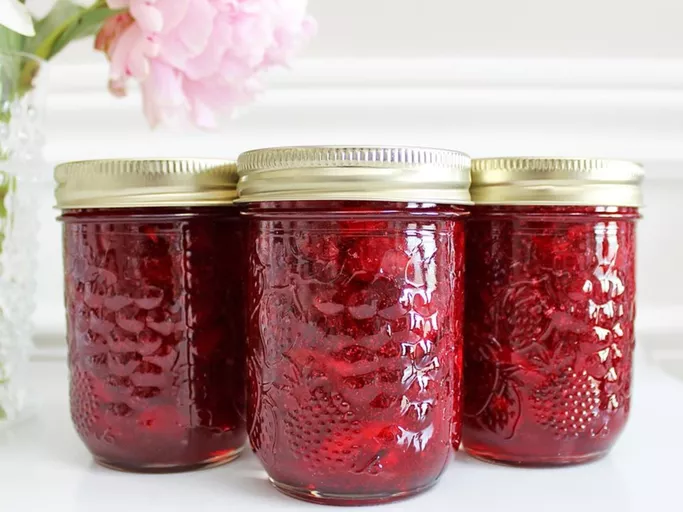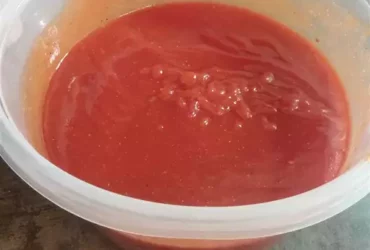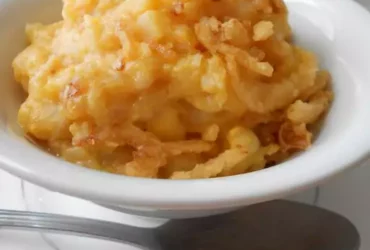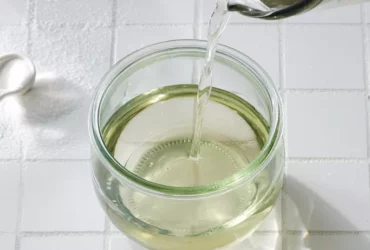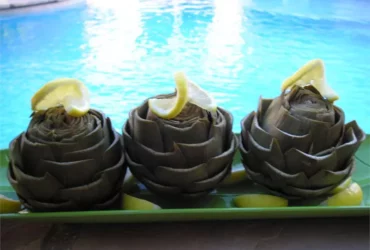Ingredients
Pantry Staples
To make a delicious homemade cherry jam recipe, you’ll need to have some essential pantry staples and ingredients on hand.
- Canned cherries (or fresh cherries that are pitted)
- Granulated sugar
- Water
- Pectin powder or liquid (optional, but recommended for a firmer jam)
- Lemon juice
- Cinnamon or other spices (optional)
Other Ingredients
- Pomegranate molasses (for added depth of flavor)
- Almond extract (for a unique twist)
- Vanilla bean paste or vanilla extract
It’s worth noting that the quality and type of ingredients you use can greatly impact the taste and texture of your homemade jam. For example:
Canned vs Fresh Cherries
- Canned cherries are often softer and have a higher sugar content than fresh cherries.
- Fresh cherries can be more tart and may require additional sugar to balance the flavor.
Pectin Options
- Pectin powder is often used in jam recipes as a thickening agent, but some cooks find it gives the jam a gel-like texture.
- Liquid pectin can be more convenient to use, especially for beginners, and produces a clearer, firmer jam.
Spices and Flavorings
- Cinnamon is a classic pairing with cherries and adds warmth to the jam.
- Pomegranate molasses can add a fruity, slightly sweet depth of flavor.
- Almond extract provides a unique twist and pairs well with the tartness of the cherries.
Feel free to experiment with different combinations of ingredients to create your own signature jam recipe!
1 cup granulated sugar
The first ingredient required for this recipe is Granulated Sugar. Specifically, you will need 1 cup of it. This type of sugar is ideal for baking and cooking because of its fine texture and ability to dissolve easily in liquids. It’s a fundamental component in many recipes, including our Cherry Jam Recipe. Granulated sugar adds sweetness to the jam, balances out the flavor of the tart cherries, and helps preserve the product by inhibiting the growth of bacteria.
When selecting granulated sugar for your recipe, make sure it is fresh and has not been contaminated with moisture or insects. Old or spoiled sugar can impart off-flavors to the jam, affecting its taste and shelf life. Using high-quality sugar will ensure that your Cherry Jam Recipe turns out with a smooth texture and a rich, fruity flavor.
In addition to providing sweetness, granulated sugar also serves as an acid regulator in the recipe. When mixed with the cherries and pectin, it helps maintain a stable pH level, which is crucial for preserving the jam. The acidity of the cherries can cause the mixture to become too acidic or too alkaline if not balanced properly. Granulated sugar helps regulate this pH balance, allowing the jam to set correctly and ensuring its safety for consumption.
Granulated sugar is a fundamental component in many recipes, including our Cherry Jam Recipe. Its ability to dissolve easily, provide sweetness, and regulate acidity makes it an essential ingredient in cooking and baking. When using granulated sugar, be sure to measure it accurately, as the ratio of sugar to cherries can affect the final product’s consistency and flavor.
1/4 cup water
The ingredient that requires a specific measurement for our Cherry Jam Recipe is water, which is an essential component to achieve the perfect consistency and texture of the jam.
We need one-quarter cup or 1/4 cup of water to add moisture and help dissolve the pectin present in the cherry juice, thereby facilitating the setting process of the jam.
This measurement is crucial as excessive water can dilute the flavor of the jam, while insufficient water may result in a too-thick consistency that’s hard to spread or consume.
When using 1/4 cup of water, you’re likely working with a smaller batch of cherries, so this amount helps maintain a good balance between sweetness and moisture levels.
In the case where you have a larger quantity of cherries, you can increase the amount of water accordingly while still keeping an eye on the overall liquid content to prevent over-dilution.
Additionally, using 1/4 cup of water allows us to avoid any potential issues related to spoilage or bacterial growth in the jam due to excess moisture, making it a safe and reliable choice for our Cherry Jam Recipe.
This measurement is also relatively easy to work with, allowing you to adjust the consistency of your jam as desired by adding more water or pectin, depending on your personal preference for texture and flavor balance.
The ingredients required for this cherry jam recipe are essential to achieving a rich and fruity flavor.
Prioritize using fresh, high-quality cherries for an optimal taste and texture experience.
- Fresh Cherries: 2 cups of fresh or frozen tart cherries (such as Montmorency)
A combination of sugar and pectin will help to thicken the jam, while also adding natural sweetness.
- Sugar: 1 cup granulated sugar (adjust to taste)
- Pectin: 0.5 oz powdered pectin
A pinch of salt enhances the flavor and helps to preserve the jam.
- Salt: A pinch of fine sea salt (optional)
Using a lemon juice or zest adds a burst of citrus flavor, which complements the tartness of the cherries perfectly.
- Lemon Juice/ Zest: 1 tablespoon fresh lemon juice and/or zest
A small amount of water is added to help dissolve the pectin and sugar, while also thinning out the jam as needed.
- Water: 1-2 tablespoons
Certain spices like cinnamon or ginger can be used in this recipe for a unique twist on flavor.
- Cinnamon/Ginger (optional): A pinch of ground cinnamon or fresh grated ginger
Other ingredients may include food coloring, antioxidants, and preservatives; however, these are not necessary for a basic cherry jam recipe.
1 tablespoon lemon juice (optional)
When it comes to making cherry jam, one of the most important ingredients to consider is the acidity component, which helps to balance out the sweetness of the cherries and aids in the preservation process.
In this case, we’re looking at 1 tablespoon of lemon juice as an optional ingredient. While it’s not a crucial component by any means, adding a small amount of lemon juice can have some significant effects on the final product.
Firstly, the acidity provided by the lemon juice helps to balance out the sweetness of the cherries, preventing the jam from becoming too sugary and overpowering. This is especially important when working with sweet cherry varieties like Bing or Rainier.
Secondly, the acidity in the lemon juice also acts as a natural preservative, helping to prevent the growth of bacteria and other microorganisms that can cause spoilage. This is particularly useful when canning or storing the jam for extended periods.
Thirdly, adding a small amount of lemon juice can help to enhance the flavor and aroma of the cherries. The acidity cuts through some of the richness of the fruit, bringing out more complex notes and nuances that might be masked by the sugar content alone.
It’s worth noting, however, that using too much lemon juice can have the opposite effect – making the jam taste overly acidic or even sour. A small amount of 1 tablespoon is usually sufficient to achieve the desired balance without overpowering the other flavors in the recipe.
Ultimately, whether or not to use the optional lemon juice comes down to personal preference and the type of cherries being used. If you’re working with tart cherry varieties like Montmorency, you may find that a small amount of lemon juice enhances their natural acidity and flavor profile. However, if you’re using sweeter cherry varieties, it’s generally best to stick with just the sugar content for the jam.
So there you have it – a brief rundown on the role of lemon juice in making cherry jam. Whether or not you choose to use this ingredient is up to you and your personal preferences when it comes to flavor profiles and acidity levels in your homemade preserves!
1 teaspoon grated ginger (optional)
The ingredient list for this cherry jam recipe is straightforward, but some components are optional or can be adjusted based on personal taste and availability.
The primary ingredients include:
- 1 pound fresh or frozen cherries, pitted
- This is the base component of the jam, providing its characteristic flavor and texture.
- 1/2 cup granulated sugar
- This adds sweetness to balance out the tartness of the cherries and helps preserve the jam through canning or refrigeration.
- 1/4 cup water
- This contributes to the jam’s consistency and helps dissolve the sugar during cooking.
- 1 teaspoon grated ginger (optional)
- Ginger adds a unique flavor dimension, enhancing the overall taste experience. Its inclusion is entirely up to personal preference, but it pairs well with the sweetness of the cherries.
A pinch of salt
- This adds depth and complements the other flavors without overpowering them.
- The ingredients are straightforward, allowing for easy preparation and a delicious homemade cherry jam that’s perfect for topping toast, using as a filling in pastries or cakes, or serving alongside yogurt or oatmeal.
- To make a delicious homemade cherry jam recipe, you’ll need some essential ingredients.
Here’s a list of what you’ll require:
- Fresh or Frozen Cherries: You can use either fresh or frozen cherries for this recipe. If using frozen, make sure to thaw them first and pat dry with a paper towel to remove excess moisture.
- Granulated Sugar: This is the primary sweetener in your cherry jam recipe. Make sure to use a high-quality sugar that dissolves easily.
- Pectin: Pectin is a natural occurring substance found in fruits, particularly apples and berries. It acts as a gelling agent, helping to thicken your jam. You can either use powdered pectin or liquid pectin.
- Water: This is optional but helps to achieve the right consistency for your jam.
You’ll also need some basic pantry staples:
- Lemon Juice: A squeeze of fresh lemon juice adds a hint of citrus flavor and helps preserve the jam.
- Spices (optional): You can add a pinch of salt, a cinnamon stick, or other spices to give your cherry jam a unique twist.
- Pantry-safe containers: For storing your homemade cherry jam, make sure to use clean, sterilized containers and lids that are suitable for canning.
When selecting ingredients, be mindful of the flavor profile you want to achieve. If you prefer a more intense cherry flavor, you might want to reduce the amount of sugar or add other ingredients like almond extract.
Instructions
Cooking the Cherry Filling
To cook the cherry filling for your homemade jam, follow these detailed steps:
Step 1: Combine Cherries and Sugar
- Firstly, gather all the necessary ingredients, including 2 cups of fresh or frozen cherries, 1 cup of granulated sugar, and a pinch of salt. You can use any type of cherry you like, but sweet cherries work best.
- Place the cherries in a large saucepan and add the sugar, salt, and any other desired spices or flavorings (like lemon juice or zest).
Step 2: Cook Cherries Down to Make Filling
- Mash the cherries with a potato masher or a spoon to release their juice and help break down the fruit.
- Cook the mixture over medium heat, stirring occasionally, until the cherries start to break down and release their juice. This should take about 10-15 minutes.
Step 3: Monitor Temperature and Add Pectin (Optional)
- Cook the mixture for an additional 10-20 minutes, or until it reaches a temperature of 220°F to 230°F (104°C to 110°C) on a candy thermometer. This is important, as it will help preserve your jam and ensure it sets properly.
- If using pectin (a natural gelling agent found in fruit), stir it in according to the package instructions. You can also use commercial pectin or agar powder if desired.
Step 4: Strain Filling and Test for Set
- Remove the saucepan from heat and let it cool slightly. Use a slotted spoon to strain the filling through a cheesecloth or fine-mesh sieve, pressing on the solids to extract as much juice as possible.
- Cool the filling to room temperature, then refrigerate for at least 8 hours before using in your jam recipe. This will allow it to set and become thicker in texture.
Combine sugar, water, and cherries in a saucepan
To create the delicious cherry jam recipe, it’s essential to start by combining three main ingredients: sugar, water, and cherries.
The first step involves gathering all the necessary ingredients, which typically include 2 cups of fresh or frozen cherries, 1 cup of granulated sugar, and 1/4 cup of water. It’s crucial to use a good quality sugar that won’t impart any unpleasant flavors to the jam.
Next, carefully rinse the cherries under cold running water, removing any stems or leaves. If using frozen cherries, ensure they’re completely thawed before proceeding.
In a medium-sized saucepan, combine 2 cups of fresh or frozen cherries and 1/4 cup of water. The water helps to create a smooth jam by breaking down the cell walls of the cherries as it cooks.
Allow the cherry and water mixture to simmer over medium heat for about 10-15 minutes, or until the cherries have broken down and released their juices. You can help this process along by mashing the cherries with a spoon or potato masher.
While the cherry mixture is cooking, prepare the sugar. In a separate bowl, mix together 1 cup of granulated sugar with any additional flavorings you like, such as lemon juice or vanilla extract. This step helps to create a balanced and flavorful jam.
Once the cherry mixture has finished simmering, carefully add in the prepared sugar mixture. The heat from the saucepan will dissolve the sugar as it cooks, creating a syrupy consistency.
Continue cooking the jam for an additional 10-15 minutes, or until it reaches your desired consistency. You can test the jam by placing a small amount on a chilled plate and letting it cool to room temperature. If it’s still too runny, continue cooking and testing until it reaches the perfect consistency.
Once the jam has finished cooking, remove it from heat and let it cool slightly before transferring it to an airtight container. Store the jam in the refrigerator for up to 6 months or freeze for longer storage.
Bring to boil over high heat, then reduce to medium low and simmer for 1015 minutes or until cherries have broken down
- To ensure that you extract the full flavor and essence from the ingredients, it’s crucial to follow these instructions carefully.
- The first step involves bringing the mixture to a boil over high heat. This process typically takes around 5-7 minutes, depending on the quantity of the mixture and your stovetop’s efficiency.
- Once the mixture has reached a rolling boil, reduce the heat to medium-low and allow it to simmer for a period of 10-15 minutes. This step is critical because it enables the cherries to break down and release their natural juices, contributing rich flavor and texture to your jam.
- In addition to breaking down the cherries, the simmering process also helps in thickening the mixture. The starches from the fruit are converted into natural pectin, which acts as a gelling agent, providing the perfect consistency for your homemade jam.
Here’s a step-by-step list of the instructions in more detail:
- Bring to boil over high heat: Bring the mixture to a rolling boil, usually within 5-7 minutes, depending on your stovetop and mixture quantity.
- Reduce heat to medium-low: Lower the heat after the mixture has reached a boil, allowing it to simmer for 10-15 minutes.
- Simmer for 1015 minutes: Let the mixture continue to cook for 10-15 minutes until the cherries have broken down and the jam has thickened.
In order to successfully follow the instructions for making cherry jam, it is essential to read through the entire recipe from start to finish.
This will enable you to understand the sequence of steps required and ensure that all necessary ingredients are prepared ahead of time.
The first step in making cherry jam involves washing and preparing a cup of fresh or frozen cherries.
Any stems, leaves, or debris should be removed from the fruit, and it should then be rinsed thoroughly with cold water to prevent contamination.
Next, the prepared cherries need to be crushed or pureed in a blender or food processor to release their juice and pulp.
This will help to extract the natural pectin present in the fruit, which is essential for creating a gel-like consistency in the finished jam.
Once the cherry puree has been prepared, it should be measured out according to the recipe’s instructions, which typically calls for 1 cup of puree and 2 cups of granulated sugar.
The sugar should be added to a large saucepan along with 1/4 cup of water, and the mixture brought to a boil over medium heat, stirring constantly.
As the sugar dissolves, it will help to balance out the tartness of the cherries and create a sweet and tangy flavor profile in the finished jam.
Once the sugar has dissolved, the saucepan should be reduced to low heat and the cherry puree added to the mixture.
The jam will then need to simmer for approximately 20-25 minutes, or until it reaches the desired consistency, which can be tested by placing a small amount of the jam on a chilled plate and letting it cool to room temperature.
If the jam sets and becomes gel-like in texture, it is ready; if not, continue to simmer for a few more minutes before retesting.
Once the jam has reached the desired consistency, remove it from heat and let it cool slightly before transferring it to sterilized jars for storage in the fridge or freezer.
Finally, label and date each jar, making sure to follow proper canning procedures if you plan to store them for long-term consumption.
Add lemon juice and ginger (if using) during last minute of cooking
In order to prepare this delectable cherry jam recipe, you must first follow a series of specific steps.
- Step 1: Combine the sugar , cherry juice, and pectin in a large pot. Place it over medium heat and stir until the sugar has dissolved completely.
- Step 2: Bring the mixture to a boil, then reduce the heat to low and let it simmer for about 20 minutes, or until it thickens as desired.
- Final Step: During the last minute of cooking, add lemon juice and ginger (if using) to the jam. This will not only enhance the flavor but also preserve the color and texture of the jam.
Remove the pot from heat and let it cool for a few minutes before transferring the cherry jam into clean glass jars. Store them in the refrigerator once they have cooled completely, and enjoy your homemade cherry jam on toast, biscuits or as a topping for yogurt or ice cream.
Remember to always follow safe food handling practices when preparing and storing your homemade jams.
Remove from heat and let cool slightly
When it comes to removing food from heat, safety should always be the top priority. In the case of a cherry jam recipe, this means taking care to handle hot pans and jars with caution.
The instruction “remove from heat” typically indicates that the cooking process is complete, and the next step involves allowing the jam to cool slightly before proceeding. This cooling period can range from 5-10 minutes, depending on the specific recipe and the desired consistency of the final product.
It’s essential to note that while “let cool slightly” may seem like a vague instruction, it serves an important purpose in ensuring the jam cools down enough for further handling without becoming too cold or congealed. If the jam is allowed to cool completely, it can become difficult to handle and may not have the desired texture.
The ideal temperature for removing the cherry jam from heat will depend on several factors, including the type of fruit used, the sugar content, and the acidity level. Generally, a good rule of thumb is to let the jam cool until it reaches a temperature that’s still warm but no longer scorching hot.
In terms of handling the hot pan or jars containing the cherry jam, it’s crucial to exercise extreme caution to avoid burns or accidents. This may involve using oven mitts, tongs, or other protective gear to carefully remove the pans and jars from the heat source.
Additionally, when letting the cherry jam cool slightly, it’s not uncommon for it to thicken further as it cools. This is a natural process that can enhance the overall texture and consistency of the final product. However, if the jam becomes too thick or congealed, it may be necessary to reheat it briefly to achieve the desired consistency.
To successfully make a delicious cherry jam recipe, following a clear set of instructions is crucial. Here are some key guidelines to consider:
Ingredients:
- Cherries: Fresh or frozen cherries, depending on the season and preference
- Sugar: Granulated sugar to balance sweetness
- Pectin: Natural pectin or commercial pectin powder/liquid to aid in gel formation
- Acidic ingredient (optional): Lemon juice, vinegar, or citrus zest to enhance flavor and preserve the jam
Instructions:
- Prepare the cherries: Wash, stem, and pit fresh cherries. If using frozen cherries, let them thaw first.
- In a medium saucepan, combine cherries, sugar, pectin, and acidic ingredient (if using). Heat the mixture over medium heat, stirring occasionally, until the sugar has dissolved and the cherries start to release their juices.
- Bring the mixture to a boil, then reduce the heat to medium-low and simmer for about 20-25 minutes or until the jam has thickened and passed the “wrinkle test.” To perform the wrinkle test, place a small amount of the jam on a chilled plate; if it wrinkles when pushed with your finger, it’s ready.
- Remove the saucepan from heat and let the jam cool slightly. Use an immersion blender or a regular blender to puree the jam to your desired consistency.
- Sterilize jars: Wash the jars in hot soapy water, rinse thoroughly, and dry them with clean towels. Place the sterilized jars on a baking sheet and put them in a preheated oven at 200°F (90°C) for 10-15 minutes.
- Fill the jars: Ladle the hot jam into the prepared jars, leaving about 1/4 inch of headspace. Remove any air bubbles by running a non-metallic utensil around the inside of the jar and ensure the seal is not compromised.
- Seal the jars: Place the sterilized lids on the jars and process them in a boiling water bath for 5-10 minutes, adjusting for altitude as necessary. Remove the jars from the water bath and let them cool to room temperature, undisturbed, for 24 hours.
Storage:
- Room temperature: Store sealed jam in a cool, dark place for up to 6 months.
- Refrigerate or freeze: Store the jam in the refrigerator for up to 6 months or in the freezer for up to 12 months. Before consumption, thaw frozen jam at room temperature or refrigerate overnight.
Packaging and Storage
Preparing the Jars
- To prepare the jars for storing the cherry jam, it’s essential to follow proper packaging and storage techniques to ensure the quality and safety of the product.
- The first step is to sterilize the jars, lids, and rings in boiling water for 10-15 minutes. This process helps to kill any bacteria or other microorganisms that may be present on the equipment, reducing the risk of contamination during filling.
- Once the equipment has been sterilized, remove it from the pot and let it cool slightly. Place the lids and rings into a bowl of hot water for 2-3 minutes to soften the rubber sealing edges.
- Pack the cherry jam into the hot, sterilized jars, leaving about 1/4 inch (6 mm) headspace at the top of each jar. This is essential for creating a vacuum seal when the jar is closed and allowing the jam to expand as it cools.
- Using a clean utensil or canning funnel, remove any air bubbles that may have formed in the jar by running a knife around the edges of the jam and gently tapping the side of the jar.
- To create a vacuum seal, place the lid on top of each jar and screw the ring onto the jar until it’s finger-tight. Do not overtighten the rings as this can damage the sealing edges.
- Place the jars into a large pot or pressure canner with a wire rack at the bottom to allow for air circulation around each jar. The water level should be 1-2 inches (2.5-5 cm) above the tops of the jars, covering them entirely.
- Bring the water to a boil and maintain it at a rolling boil for 10-15 minutes for low-acid foods like cherry jam. This process is called “processing” the jars.
- After processing, remove the jars from the pot using a canning tool or tongs and let them cool on a wire rack. The vacuum seal will be evident by the sound of the lid popping as it seals during cooling.
- Allow the jars to cool completely before storing them in a dark place, such as a pantry or cupboard. Check the seals after 24 hours by pressing on the top of each jar. If the seal is good, the lid should not move when pressed.
- The sealed jars can now be stored for up to one year at room temperature and longer if refrigerated or frozen. Before consuming the jam, always check for signs of spoilage like mold, an off smell, or a sour taste.
Sterilize jars, lids, and bands in a pot of boiling water for 1015 minutes
When it comes to packaging and storing homemade cherry jam, it’s essential to ensure that all equipment used for preparation has been properly sterilized. This includes the jars, lids, and bands, which are crucial components in preventing contamination and spoilage of the jam.
To begin the process of sterilizing the equipment, fill a large pot with enough water to cover the jars by at least 1 inch. Bring this water to a rolling boil, as indicated by large bubbles rising rapidly to the surface.
Once the water is boiling vigorously, carefully place the clean, dry jars, lids, and bands into the pot using tongs or a slotted spoon to avoid splashing the hot water.
Maintain the boiling point for 10-15 minutes. This duration allows the steam from the boiling water to effectively sterilize the equipment by killing any bacteria that may be present on their surfaces.
After the sterilization process, carefully remove each item with tongs or a slotted spoon and place them on a clean towel or tray lined with paper towels to dry. This helps prevent any moisture from accumulating on the equipment’s surface, which could lead to re-contamination once they come into contact with the cherry jam.
Allow the jars, lids, and bands to air-dry for at least 30 minutes before proceeding with filling them with the homemade cherry jam. This step is crucial in ensuring that your jam remains fresh for a longer period and tastes its best.
Remove with clean canning tongs or slotted spoon
To ensure the longevity of your homemade Cherry Jam, proper packaging and storage are essential steps to preserve its flavor, texture, and safety for consumption.
Step 1: Packaging
Once your jam has cooled slightly, it’s time to transfer it into a clean, sterilized container. You can use glass jars with lids or any other food-grade container that is suitable for storing jams and jellies.
For this process, you will need canning tongs or a slotted spoon, which will help you to carefully scoop the jam into the containers without creating air pockets or introducing any unwanted contaminants. These tools are designed specifically for handling hot food and are essential in maintaining the integrity of your jam.
Step 2: Filling and Sealing
Fill each container with the jelly-like jam until it reaches about ¼ inch from the top. Be cautious not to overfill, as this can lead to a mess when sealing and potentially spoil the contents.
Use your canning tongs or slotted spoon to remove any excess jam from around the edges of the container, making sure that it’s evenly filled.
Next, place the lids on the containers and seal them tightly. Make sure they are secure but not overtightened, as this could create vacuum issues when storing.
Step 3: Storage
Place the sealed containers in a cool, dark area or cupboard. It is crucial to store your Cherry Jam in an environment that maintains a consistent temperature below 70°F (21°C) and away from direct sunlight, which can cause it to degrade over time.
For long-term storage, you can also consider freezing the containers. However, it is essential to ensure that they are sealed properly before placing them in the freezer to prevent moisture buildup and other issues.
Remember to always check your jam periodically for signs of spoilage, such as mold, slime, or an off smell. If you notice any of these symptoms, it’s best to discard the jam immediately and make a fresh batch.
- Best Lusha Alternatives for 2025 - April 22, 2025
- Best Overloop Alternatives for 2025 - April 22, 2025
- Best 6sense Alternatives for 2025 - April 22, 2025



